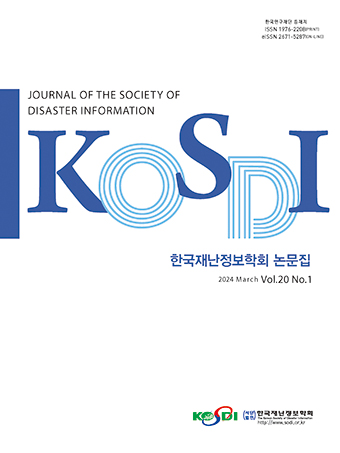Original Article
Abstract
References
Information
Purpose: The ultraviolet reflectance and transmittance of coastal building materials are one of the important factors of ultraviolet radiation in and out of coastal building. In this research, the ultraviolet spectral reflectance of many kinds of building materials was measured. Also, the relationships with the lightness, roughness, and chromaticity, which are surface characteristics, were reviewed and suggested. Method: In this study, according to the CIE classification, the ultraviolet region was defined as short-wavelength region UV-C(10nm~280nm), medium-wavelength region UV-B (280-315 nm), and long-wavelength region UV-A (315-400nm), and the visible light region was defined as (400nm ~780nm). Spectrophotometer was used to continuously measure the reflectance from the ultraviolet region to the visible light region. Results: From the measurement results, the ultraviolet reflectance on Wood was shown to be about Visible 55-68%, UV-A* 7-12%, and UV-B 4-5%. Wall tiles are about Visible18-40%, UV-A* 8-20%, and UV-B* 7-8%. That on concrete was shown to be about Visible 37%, UV-A* 28%, and UV-B*19%. Conclusion: The ultraviolet reflectance can be estimated by visible reflectance. Also, it is important to select a variety of materials according to the application when blocking UV.
연구목적: 연안건축 재료의 자외선 반사율과 투과율은 건물의 자외선 방출 및 방출의 주요 요인 중 하나이다. 이 연구에서는 건축 자재의 여러 종류의 자외선 스펙트럼 반사율이 측정되었으며 또한 표면 특성 중에 하나인 명도, 거칠기 및 색도와의 관계에 대해서도 검토 및 제안했다. 연구방법: 본 연구에서는 CIE 분류에 의거하여 자외선영역은 단파장 UV-C (10nm~280nm), 중파장 영역 UV-B (280-315 nm), 장파장 영역 UV-A (315-400nm), 가시광선 영역 (400nm ~780nm)으로 정했으며, 연속적으로 측정하기 위하여 분광 광도계를 사용했다. 연구결과: 나무의 경우 반사율은 가시광선역 55-68 %, UV-A * 7-12 %, UV-B* 4-5 %로 나타났다. 벽타일은 가시광선역 18-40 %, UV-A* 8-20 %, UV-B* 7-8 % 로 나타났으며, 콘크리트는 가사광선역 37 %, UV-A* 28 %, UV-B* 19 %로 나타났다. 결론: 가시광선 반사율에 의해 자외선 반사율을 추정 할 수 있으며, 또한 자외선 차단을 할 때에는 용도에 따라 다양한 재료를 선택하는 것이 중요하다.
- Blumthaler, M., Ambach, W. (1988). "Solar UVB-albedo of various surfaces." Journal of Photochemistry and photobiology, Vol. 48, No.1, pp. 85-88. 10.1111/j.1751-1097.1988.tb02790.x 3217444
- Buttner, K. (1935). "Die abkublungsgrobe in den duen." Sttalentherapie, Vol. 54, pp. 167-173.
- Fukuda, H. (1987). "The amount of ultraviolet radiation of sunlight in Japan, Dermatology Bulletin." Shiseido Institute for Basic Science, pp. 8.
- Kawanishi, T., Uh, J.S. (1997). "Basic study on medium wavelength UV reflectance of beach and building materials." Japan Architectural Institute Annual Conference Lecture Summary, pp. 311-312.
- Kor, C.J., Monard, L.A.G. (1986). "The ultraviolet and visible reflectance of building materials." CIE-Journal, Vol. 5, No. 1, pp. 1-7.
- Takeda, Y. (1998). "Understanding the outline of UV reflection characteristics of building materials, Study on extraordinary reflection of environment forming materials, Part 1." Japanese Association for Coastal Zone Studies, No. 505, pp. 31-36. 10.3130/aijs.63.31_1
- Uh, J.S., Kawanishi, T. (1998). "A study ultraviolet spectral reflectancet of coastal sands." Journal of Japan Institute, Architectural Institute of Japan, No. 516, pp. 167-172.
- Publisher :The Korean Society of Disaster Information
- Publisher(Ko) :한국재난정보학회
- Journal Title :Journal of the Society of Disaster Information
- Journal Title(Ko) :한국재난정보학회논문집
- Volume : 17
- No :2
- Pages :195-205
- DOI :https://doi.org/10.15683/kosdi.2021.6.30.195




 Journal of the Society of Disaster Information
Journal of the Society of Disaster Information







